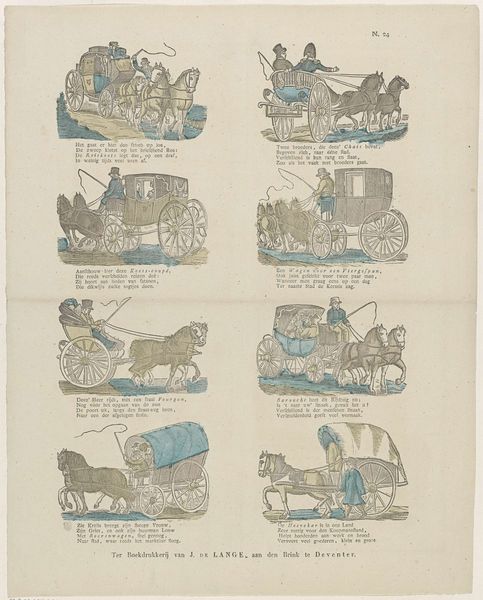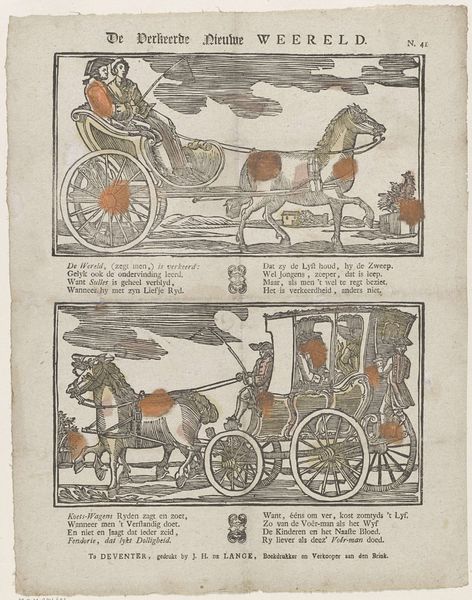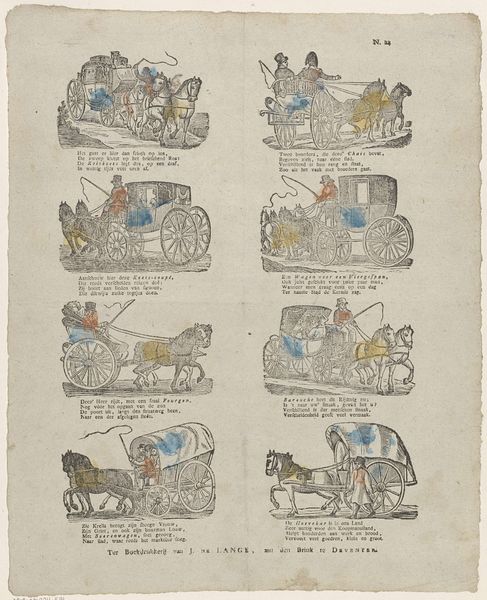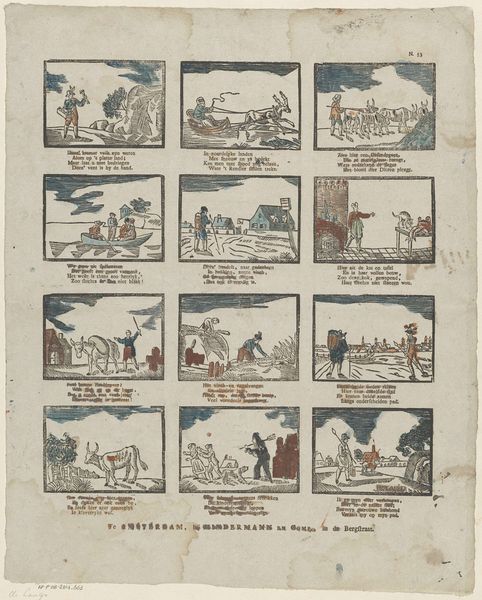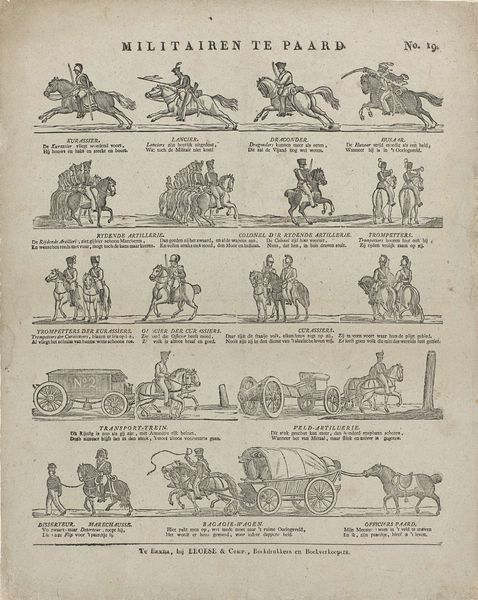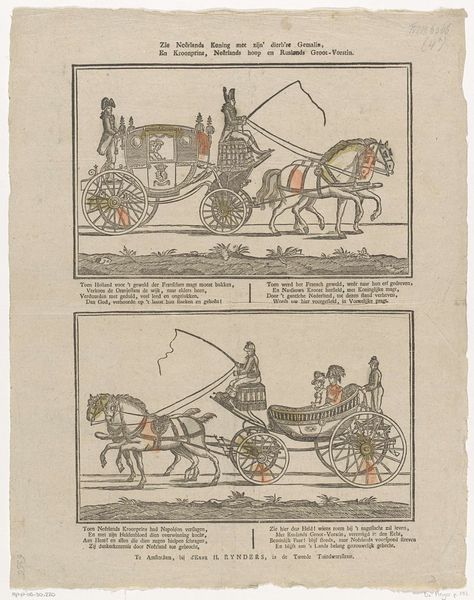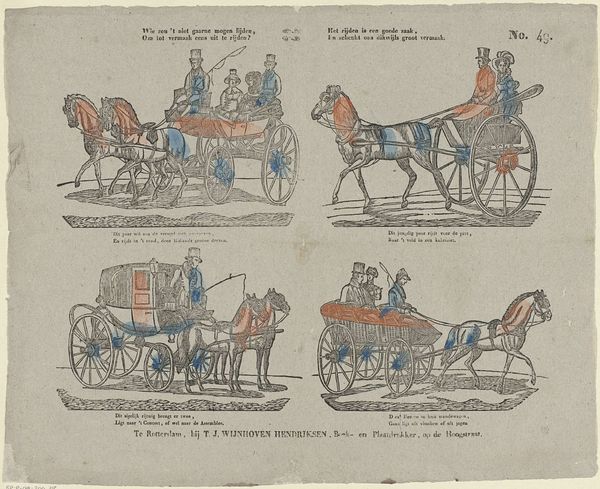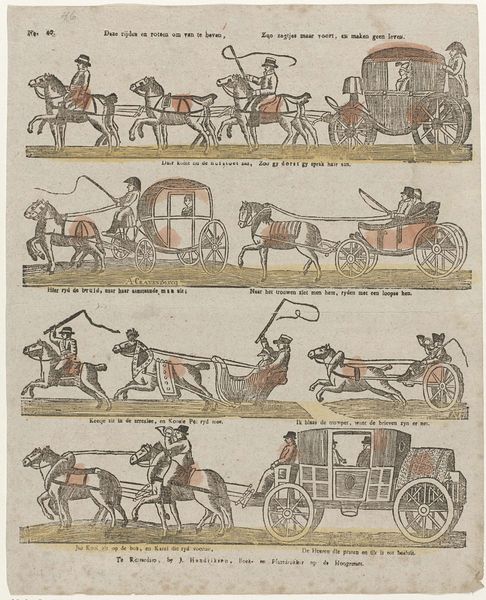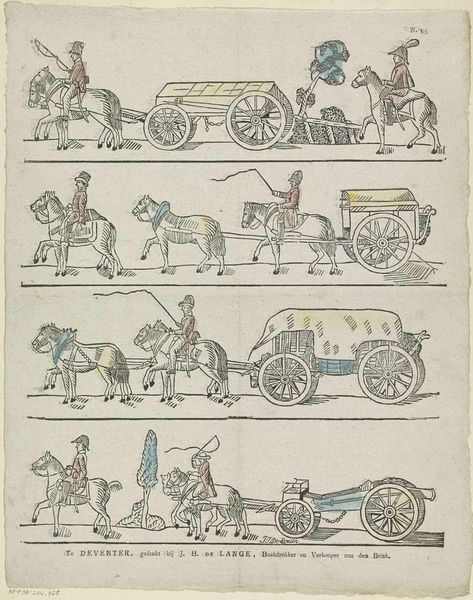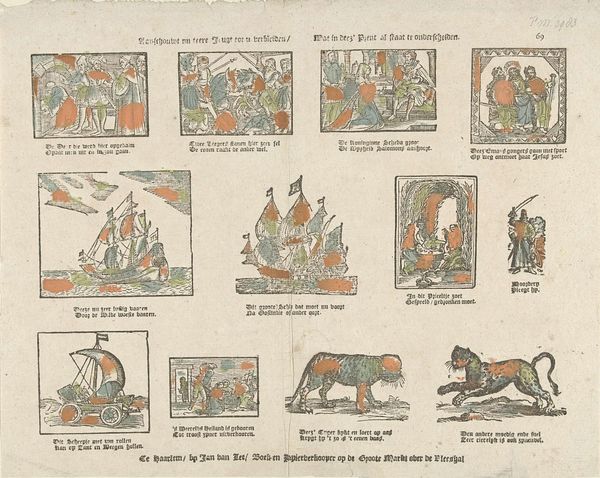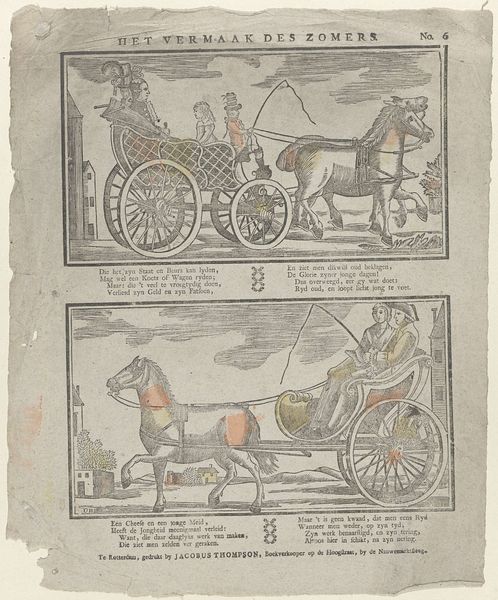
In fraaije lange zomer dagen; / Kan 't rijden jong en oud behagen 1819 - 1840
0:00
0:00
alexandercranendoncq
Rijksmuseum
print, engraving
#
narrative-art
# print
#
landscape
#
folk-art
#
genre-painting
#
engraving
Dimensions: height 402 mm, width 331 mm
Copyright: Rijks Museum: Open Domain
Editor: This print, titled "In fraaije lange zomer dagen; / Kan 't rijden jong en oud behagen" from somewhere between 1819 and 1840 by Alexander Cranendoncq, caught my eye. It’s a fascinating composition with its series of small scenes depicting horse-drawn carriages. The details are charming and intricate. How would you interpret this work from a formalist perspective? Curator: Thank you. From a formalist lens, the work reveals its meaning through its inherent structure. Notice the artist’s strategic use of repetition – eight vignettes arranged on the page, each containing similar compositional elements, yet distinct variations of carriages and horses. This rhythmic pattern establishes a clear visual order. Editor: Yes, there is a certain visual harmony across the entire composition, and all the frames are interconnected with each other despite the distinct scene. What’s the significance of those slight changes? Curator: Note the different types of carriages. Look closely at their construction, and how the artist has rendered light and shadow through line and engraving. The use of line weight varies, contributing to a sense of depth and dimensionality. The differences aren’t necessarily referential of anything beyond what you can see of their composition and shapes. How does the interplay between the positive space (the carriages and figures) and negative space (the surrounding area) affect your reading of the piece? Editor: Interesting question. The negative space isolates each carriage while still uniting them into a greater composition by organizing each shape across the rectangular sheet, which highlights the geometric construction of this piece as a whole, thank you for pointing it out. Curator: You’re welcome. So, how do you feel your reading of the artwork has changed in our discussion? Editor: I focused primarily on the depicted subject matter first, the carriages. Considering the spatial relations that comprise the composition itself opens up an entire new level of the reading of this artwork.
Comments
No comments
Be the first to comment and join the conversation on the ultimate creative platform.
